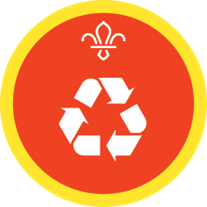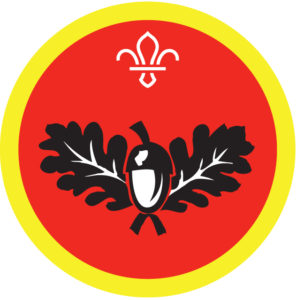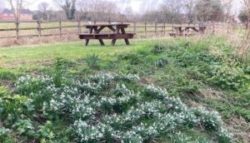Aims: To provide help and assistance with training for Scouting groups to achieve their badges of a “green” nature.
Progress as of July 2023: Awaiting outcome of proposed renewal and extension of the Scout Hut. The group appears to be very well supported and active in the area at the moment.
Environmental Conservation Badge (Cub Scout)
1. Learn how to separate recyclable and non-recyclable rubbish ready for collection. Find out where to take recyclable items that cannot be collected with your normal rubbish.
- Find out how to reduce the energy and water you use in your home. Show how you have encouraged your family to reduce water and energy use over four weeks.
- Find out about one type of renewable energy. Talk to your leader about the advantages and disadvantages of the technology.
- Take part in two projects with a group of other people. You could:
- Clear a ditch, pond or creek.
- Make, set up and look after a bird feeder, table, nesting box or bath.
- Look after a piece of land or a garden.
- Tidy up a piece of wasteland.
- Take part in an anti-litter campaign.
- Plant a tree or shrub.
- Look after a compost bin.

Naturalist Badge
- Learn how to identify six different living things from two of these categories:
- trees
- garden birds
- water birds
- minibeasts and insects
- wild flowers
- pond dwellers
- fungi
- butterflies and moths
That means you should have 12 examples in total.
- Over three months, visit the same natural area at least four times. Take a note of the changes in the plants and wildlife that you see. You might visit a garden, hedgerow, canal, river lake or park. Make sure that you have an adult’s permission for the visits.
- Learn the countryside code and how to follow it.
- Choose one of these activities to do:
- Create a piece of art using natural material. You could do a bark or leaf rubbing, dried flower picture or maybe a collage.
- Use a dye that uses natural ingredients to colour a piece of material.
- Make a feeding station for birds. Get permission to hang it in a good position.
- Make a hedgehog, ladybird or bee house.
- With an adult pick wild edible berries, leaves or fruit. Use them in a recipe.
!For number 2, it must be agreed with an adult that a young person can visit a natural area. They must know where a young person is and how long they are going to be.
When picking plants or berries for number 4, make sure you are 100% sure you know what it is and whether it’s safe to eat. If you’re not sure, don’t eat it.

